It has been eight years since Chelsea won the UEFA Champions League, in Munich, against the host team of Bayern, smashing their dreams of winning the biggest trophy in club football in their own home. Now it is their first encounter after that dramatic final and without doubt Bayern will seek revenge. However, the young Chelsea squad will have a word on that as well.
This tactical analysis preview will be structured in a slightly different way though. Looking at both teams’ philosophies, we see that Bayern under Hansi Flick play in a similar way in almost every game, regardless of the opponent. Frank Lampard’s Chelsea, on the other hand, have a clear idea on how they want to play as well, which is attractive attacking football with a mixture of possession and vertical game. Chelsea are capable of adapting to the opponent though, using different formations depending on the opponent’s strengths. So it requires sound knowledge about the opponent in order to predict how Lampard might possibly play. Thus, in our analysis we will first have a look at how Flick will set-up his team and then switch over to Lampard’s possible tactics against this.
Probable Bayern Line-Up
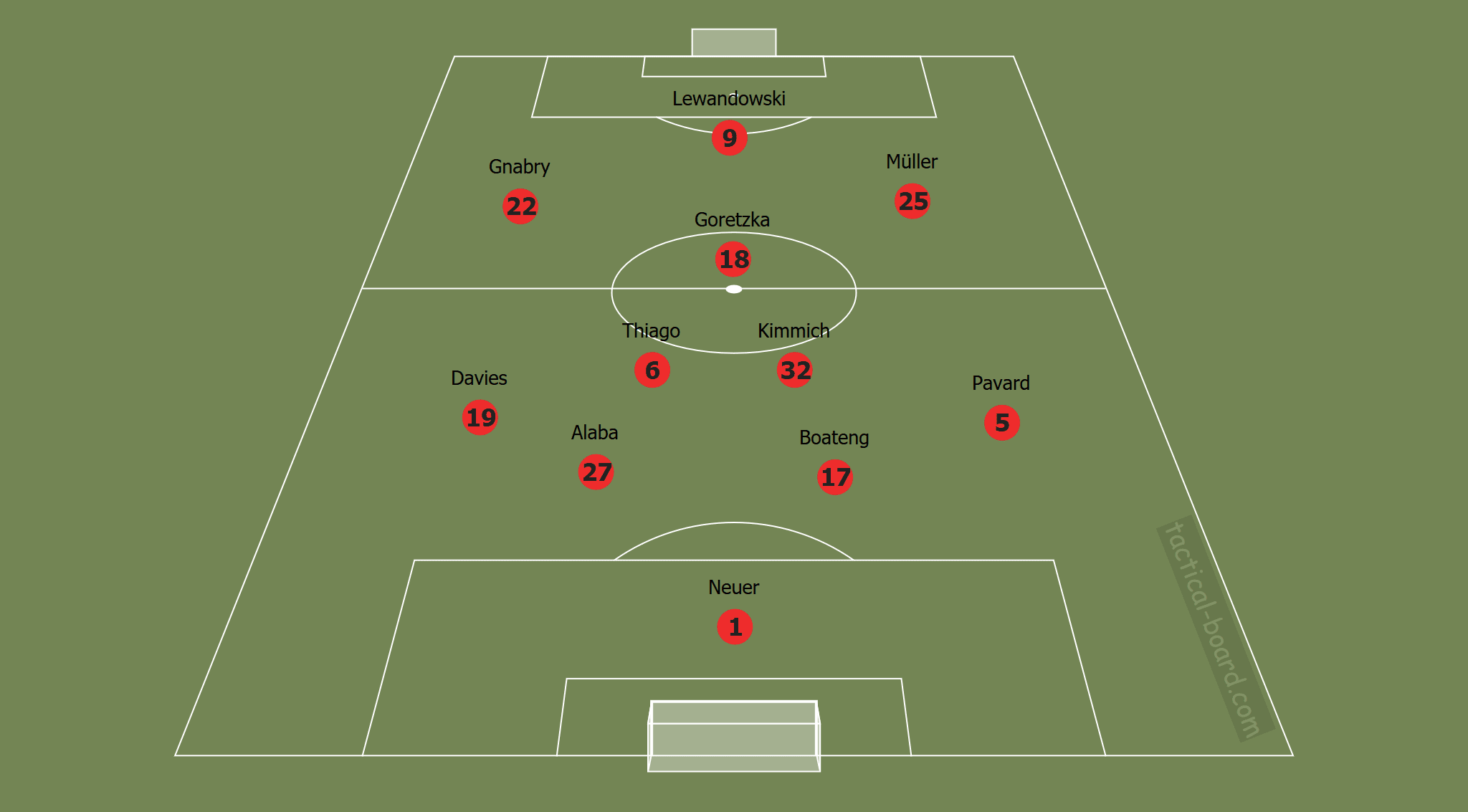
Most likely, this will be Hansi Flick’s first choice. Since he took over from Niko Kovač, Flick always used a 4-2-3-1/4-3-3–formation, except the most recent game against Paderborn where he decided to play in a 3-4-2-1-formation. The back three system, even though seemingly fitting to the team in theory, did not prove to give the result Bayern expected. Flick’s philosophy is based on high pressing and vertical play, which obviously can be better executed in a 4-2-3-1 with better access to the opponent further up the pitch.
Question marks remain on two positions. One will be the central advanced midfielder position, in our line-up occupied by Leon Goretzka. Goretzka brings in a lot of physicality and dynamics. Thanks to his high workload and stamina, he is a strong box-to-box player. However, there is also the option to move Thomas Müller into the centre and play Kingsley Coman on the wing. This would be a much more offensive and aggressive approach. Most likely, if Goretzka is healthy (he missed the recent game against Paderborn), Flick will opt in for him. The second critical position is the centre-back spot next to David Alaba. While Jérôme Boateng stabilized his performance to a certain point, 80 Million Euro transfer Lucas Hernández pushes for a starting spot. We will analyse the pros and cons for that in the following.
Build-up structure work against Hernández
Since Hansi Flick took over, David Alaba is Bayern`s go-to-guy in the build-up. Flick moved him to the centre-back position, which worked great since Alphonso Davies also exceeded all expectations playing as left-back. The next step is to fit in Hernández, but this proved to be more difficult than expected.
Against Köln, when Hernández was substituted in, he played as right centre-back next to Alaba.
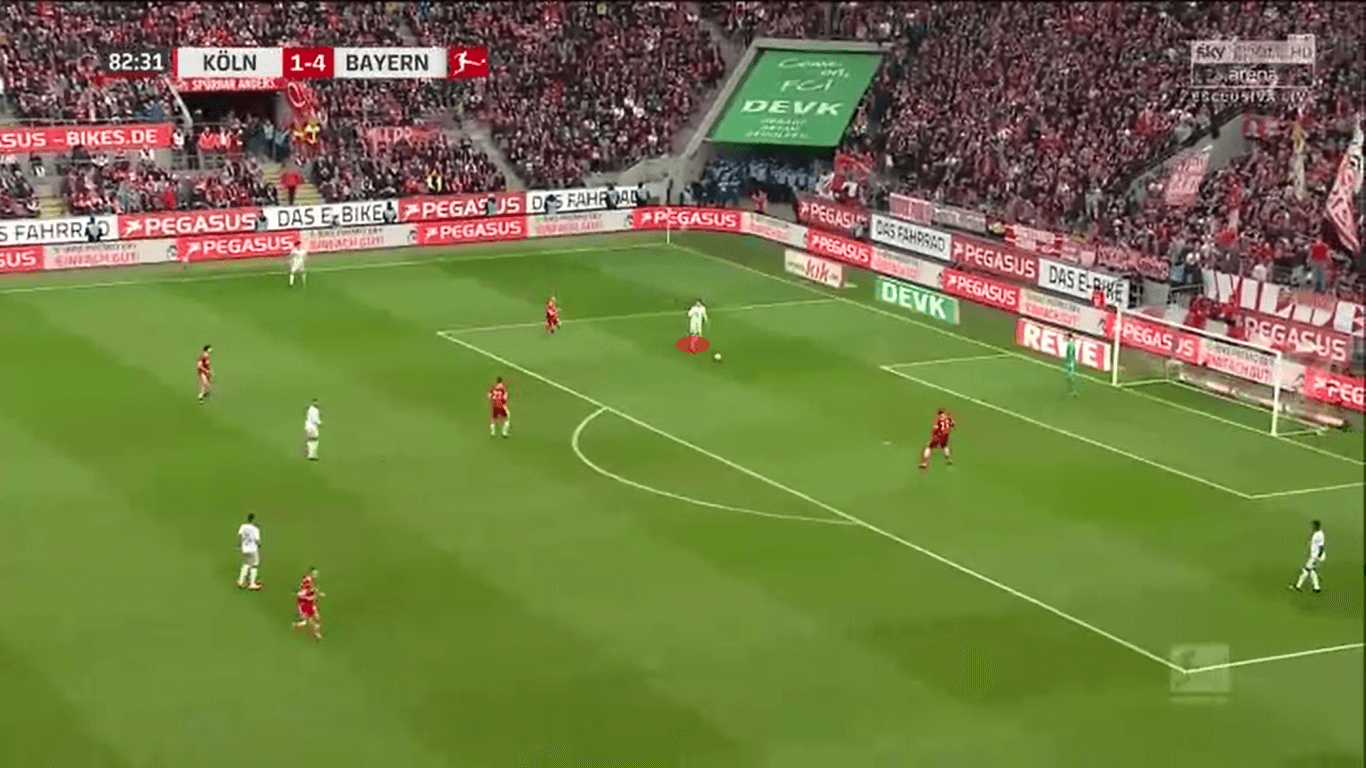
In the build-up, this proved to be suboptimal, since Hernández tended to dribble to the centre with his strong left foot. For Köln, it became much easier to press high and put Hernández under pressure. As a consequence, Bayern were not able to control the game even though they were three goals up. Additionally, Hernández also had problems defensively, since he had to accommodate himself with different spaces than he was used to for his whole career.
Against Leipzig in the previous game, Alaba had moved to the right centre-back position. Having a strong left-foot as well, he struggled with similar problems.

To maintain stability, Thiago and Joshua Kimmich fell back to provide help, but this caused even stranger build-up structures.
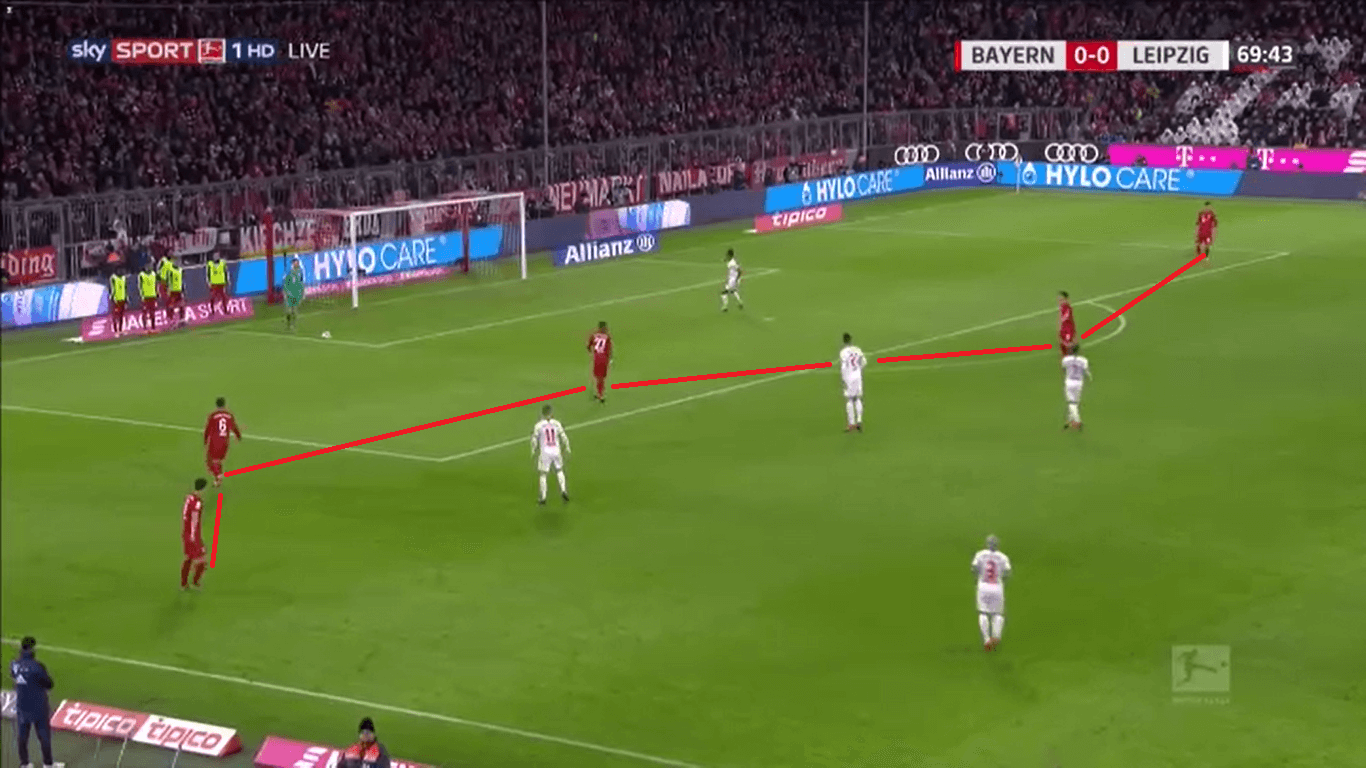
In other cases, Bayern’s build-up looked way more natural with Boateng. When Benjamin Pavard dropped back, it was almost a back-three, like in the following example.
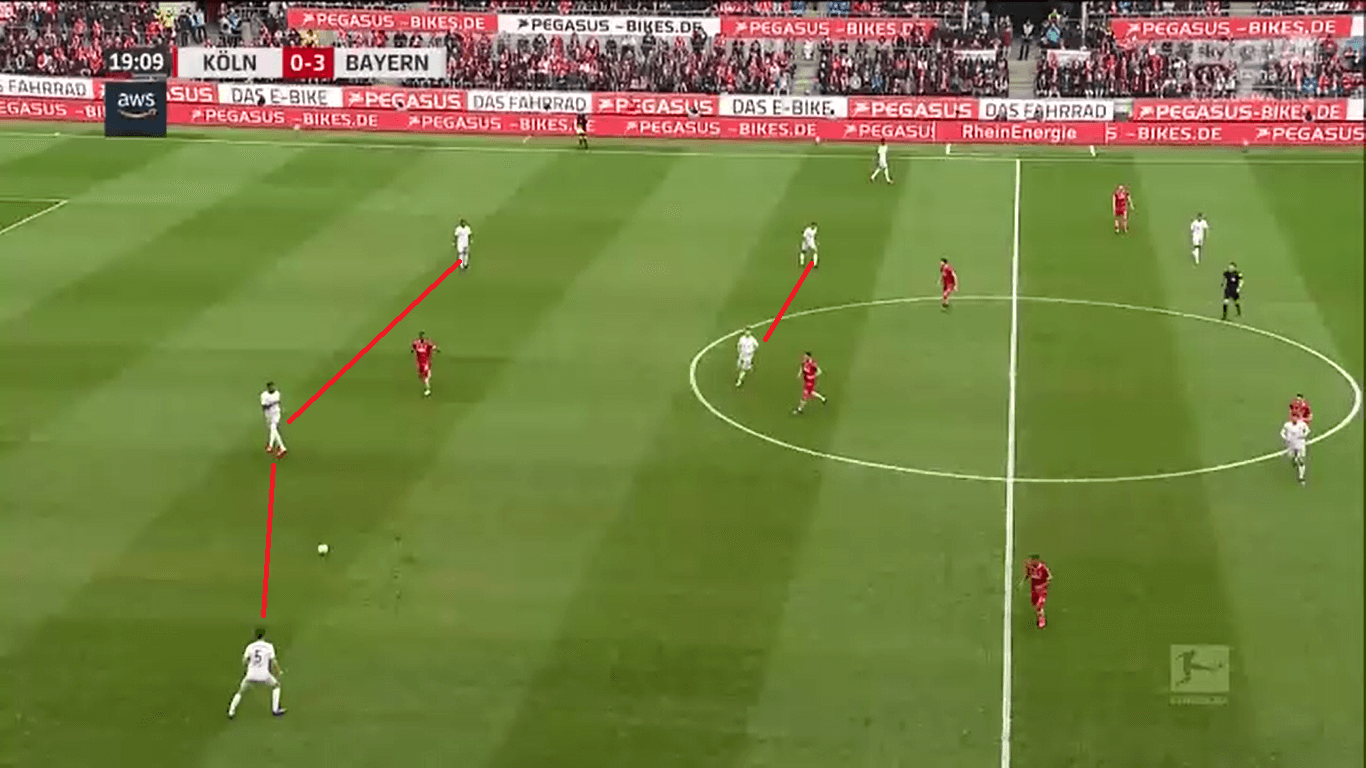
However, it is way more flexible than the fixed back-three that Bayern played against Paderborn. In most cases, Pavard can also push up the pitch to provide width on the wing. In such cases, Thiago falls back.
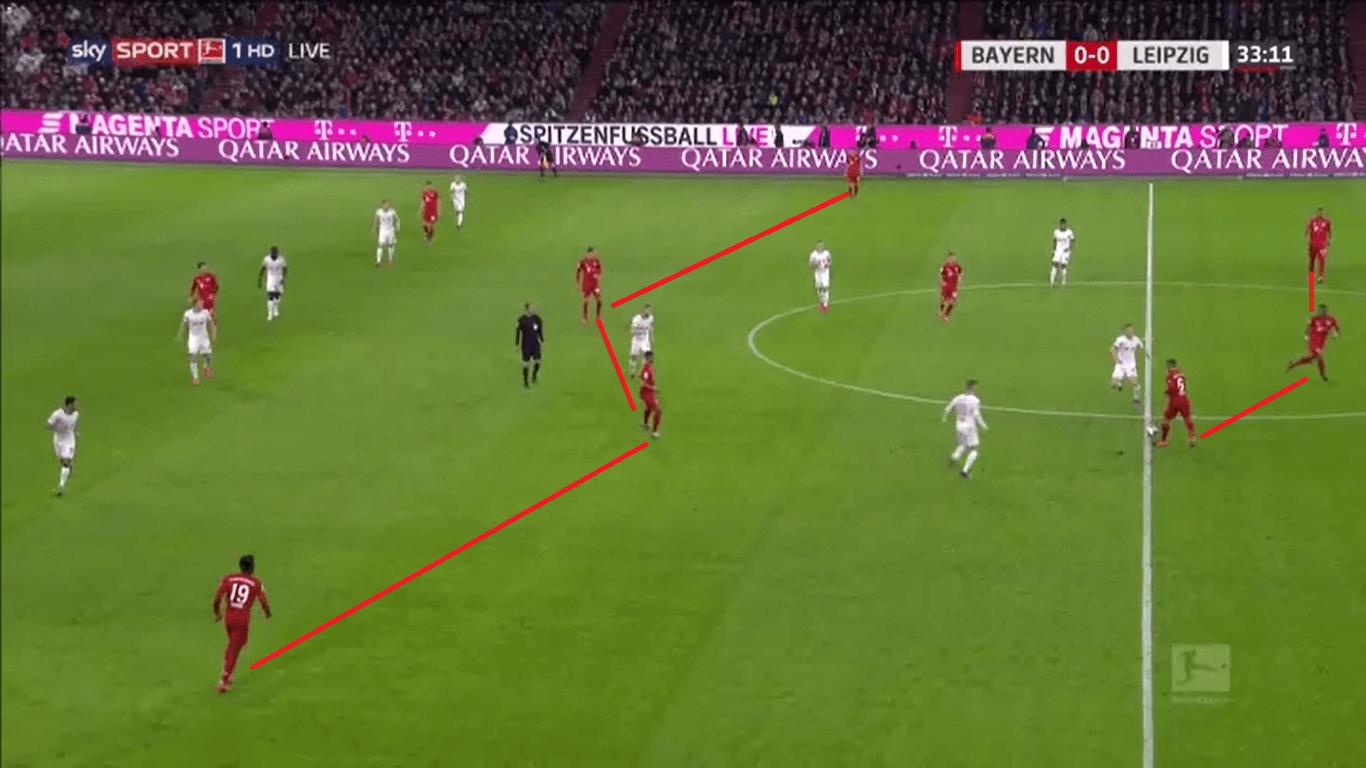
Notice how left-winger Serge Gnabry moved into the halfspace as Davies pushed high on the wing. Goretzka stays between the lines, while Müller moves inside like a second striker next to Lewandowski. Most likely, this is how Bayern’s attacking structure will shape against Chelsea.
Vertical play through the half-space
Under Flick, Bayern’s biggest strength beside the high press are their vertical play.
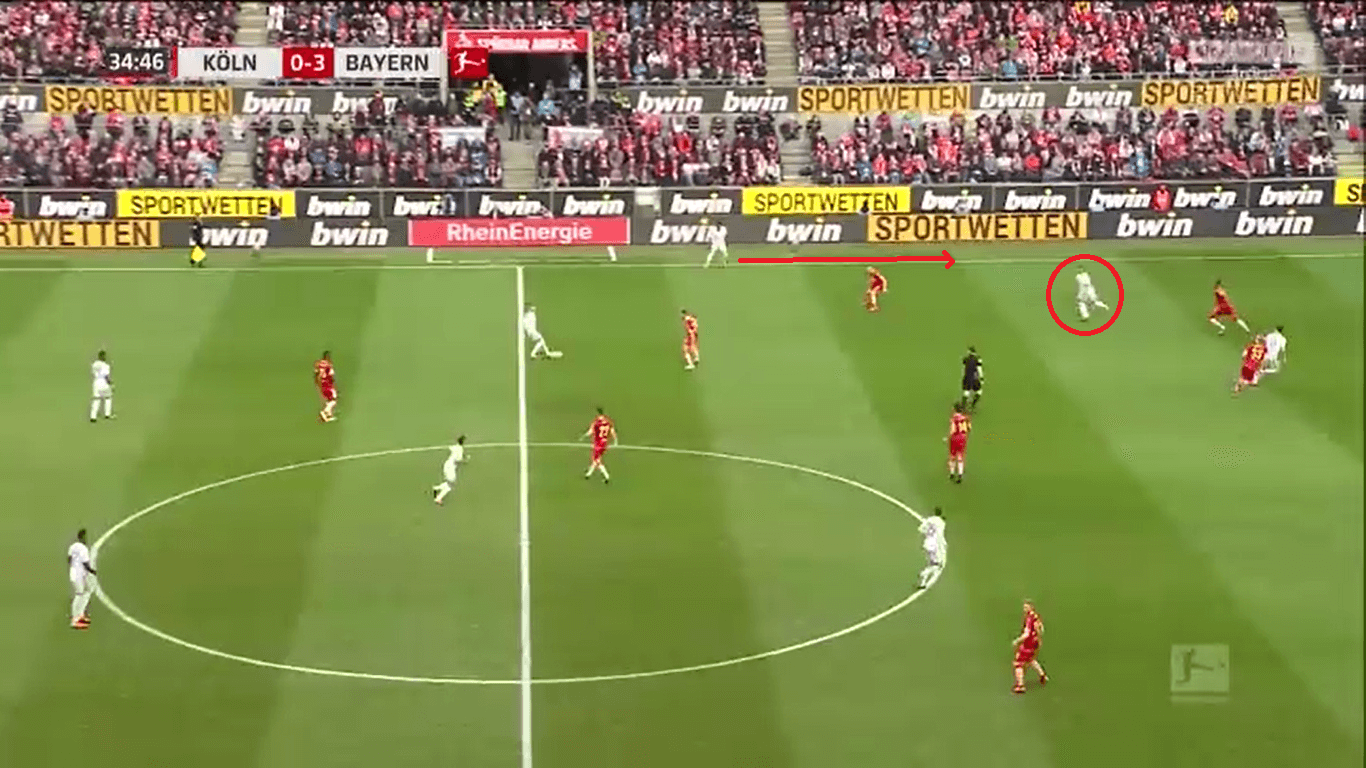
Here again, Kimmich uses the vertical passing lane to Gnabry in the half-space. Davies, being on the most athletic players worldwide, sprints down the wing and opens up a lot of space. Additionally, Lewandowski makes a run behind the defensive line. Thus, Kimmich also has the option to play it long, but other than that it opens up additional space for Gnabry. As you can see Gnabry does not have any nearby one-touch passing option, apart from maybe letting the ball flip over to Davies on the wing. The key in this attacking pattern is that Gnabry makes a turn diagonally towards the target.
Similarly, on the other wing, Pavard bombs down the right-wing and Müller moves inside like in the following example.
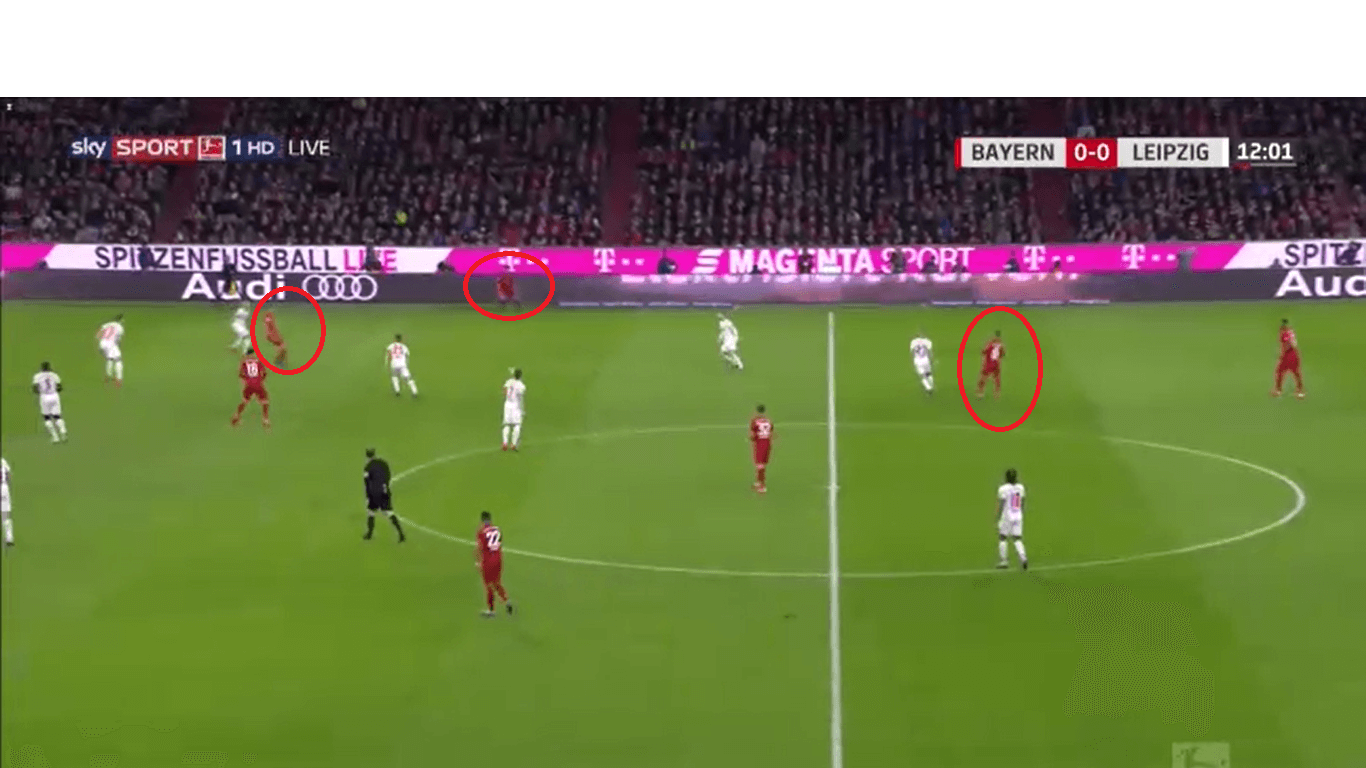
The difference here is that Müller’s strength do not lie in dribbling with tempo towards the defence. Thus, Pavard and also Goretzka provide options for Müller to lay the ball off with one touch and start a run in behind the defensive line.
In the final third then, Bayern either tend to cross or combine trough the centre like in the following image.
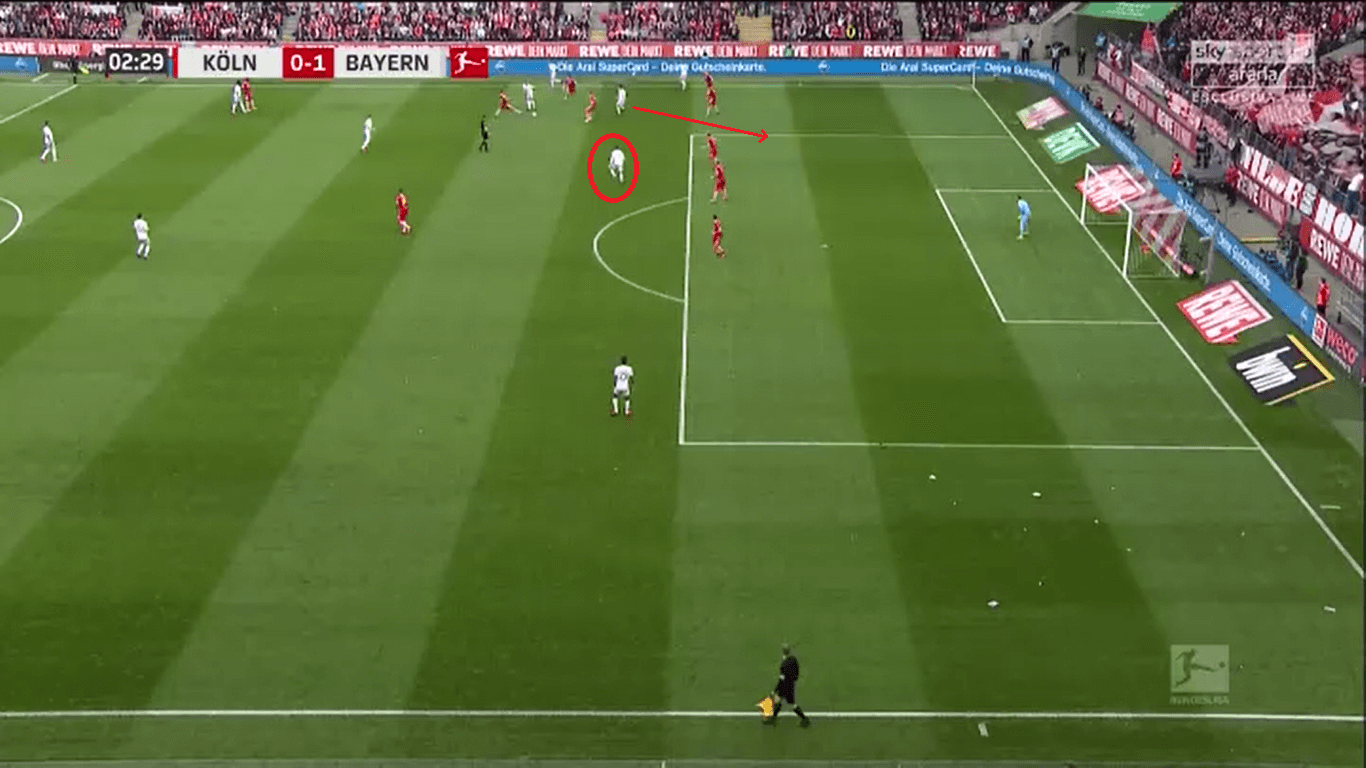
Having cleared the centre thanks to intelligent movement, Bayern are able to play the ball into there thanks to the technical ability of their players enabling them to play quick short passes in tight spaces. Müller receives the ball and lay it again off with one touch to Lewandowski into the box.
Bayern’s high press could pose problems for Chelsea
Chelsea need to be prepared for Bayern’s press. Even though Leipzig coach Julian Nagelsmann stated after their game against Bayern, that the Bavarian pressing game was nowhere near perfect, Bayern can be quite dangerous. This has to do with the previously mentioned quick and vertical attacking patterns that enable Bayern to finish an attack in a short amount of time after winning the ball.
Especially Schalke had strong difficulties against this.
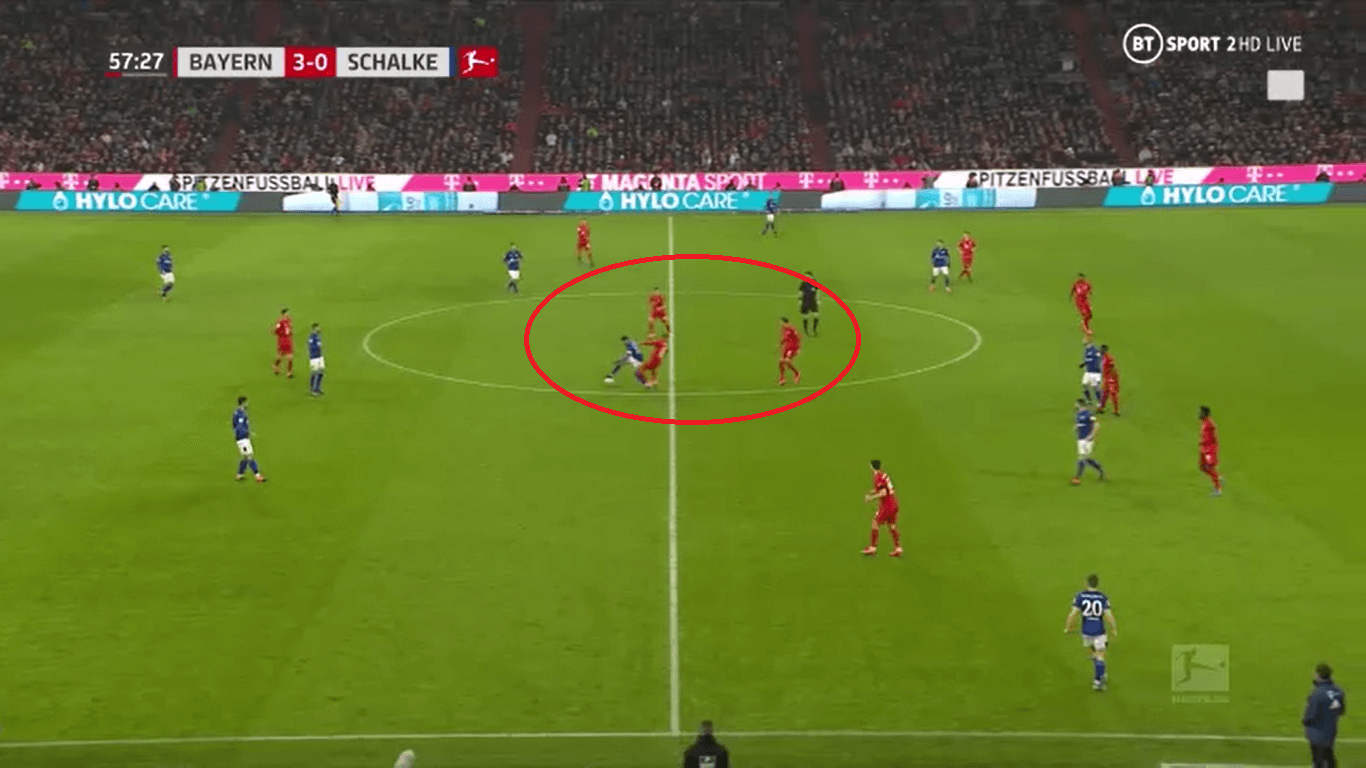
Even though there were passing options, Schalke tried to hold the ball in the centre of the pitch. Bayern hold that space tight and crowded. Thiago won the ball, immediately played it forward and in the end was able to even finish the attack himself scoring the goal.
Another image from that particular game shows how aggressive and man-oriented Bayern’s pressing game is. In many cases, it is only the long ball that is left for the team in possession.
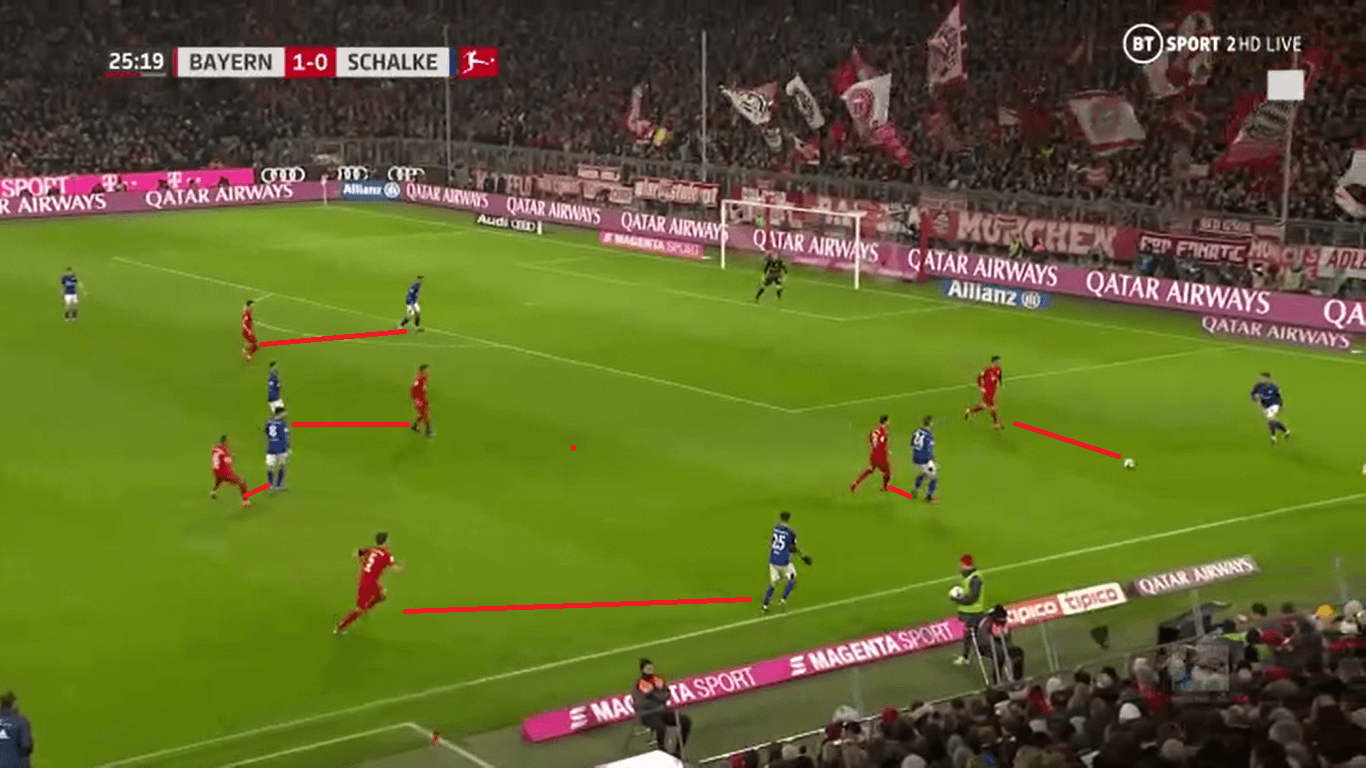
Chelsea have the tools to neutralize Bayern
Coming now to Chelsea’s approach, we will discuss their possible options. Doing that, we will focus on two possible formations. One of them is a classical 4-3-3, the other one is a 3-4-2-1. Lampard is switching from time to time between those systems, making it hard to predict how he will decide. Looking at the available personnel for Chelsea, a 3-4-2-1 seems more likely. The reason for that is that Andreas Christensen is back, while N’Golo Kanté and Christian Pulisic are missing due to an injury. Therefore, we can assume that the same eleven from the Tottenham game this past weekend will start again. Tammy Abraham is also back from an injury and could play instead of Olivier Giroud.
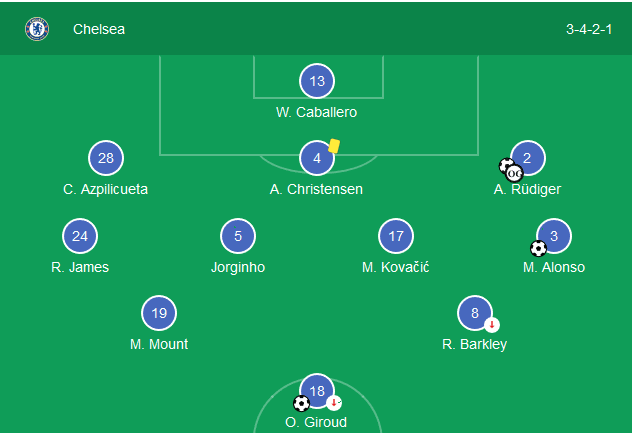
Bearing in mind what we have analysed on Bayern, the 3-4-1-2 might work out quite well. Assuming that Pavard and Davies will attack relentlessly through the wing, Marcos Alonso and Reese James would have to pick them up. This leaves the three centre-backs and the two defensive midfielders in a 5vs4 advantage in the centre.
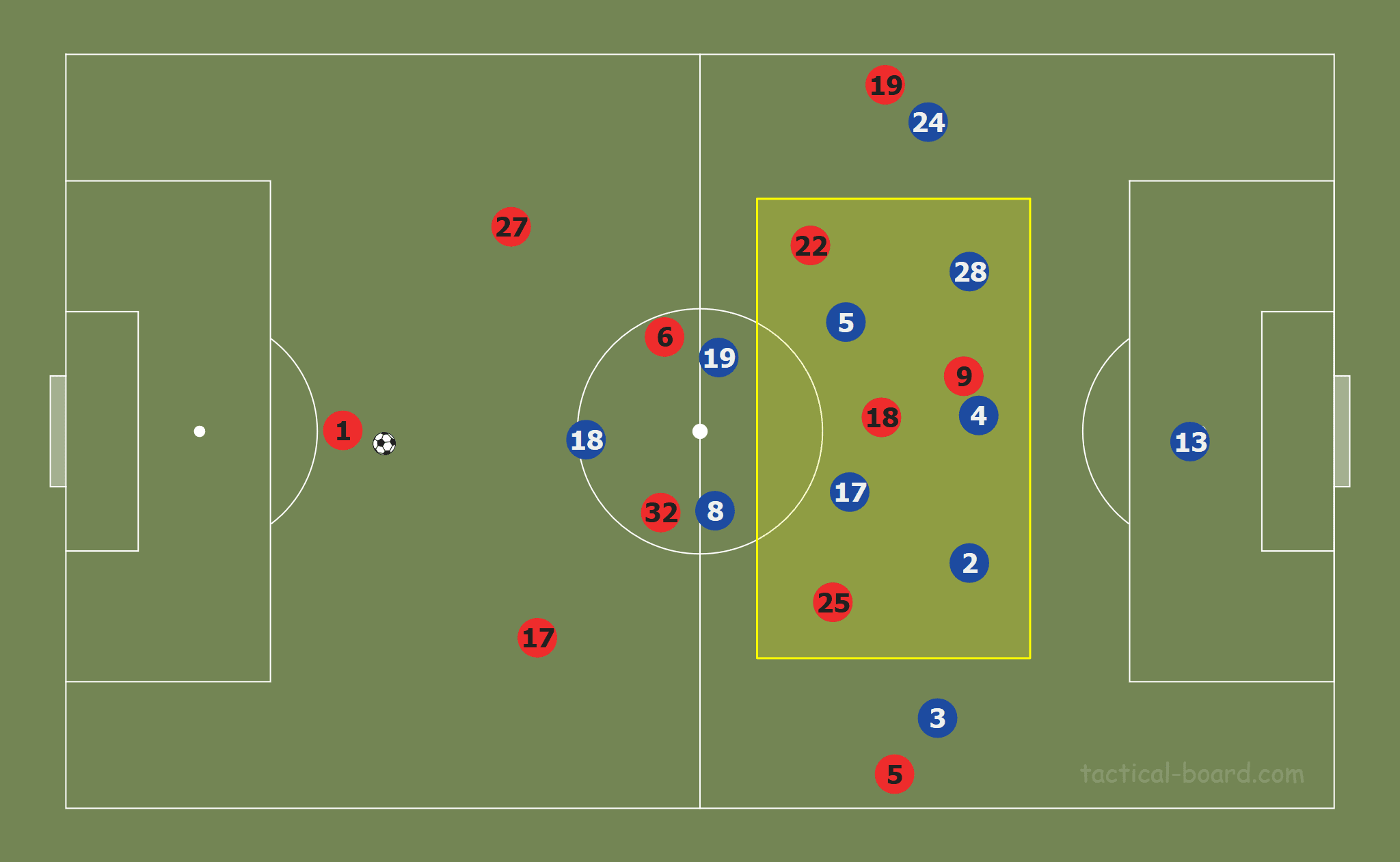
Of course, the workload for Mateo Kovačić and Jorginho will be huge. It will be incredibly important, that César Azpilicueta moves forward and closes the space against Gnabry whenever necessary. The spaces that open up from this need to be covered instantly. Otherwise Lewandowski, Müller and Goretzka are quite capable of taking advantage from this.
Concerning Bayern’s build-up, Lampard will surely aim to prevent passes to Thiago and Kimmich. In most of Chelsea’s game, this could be observed.
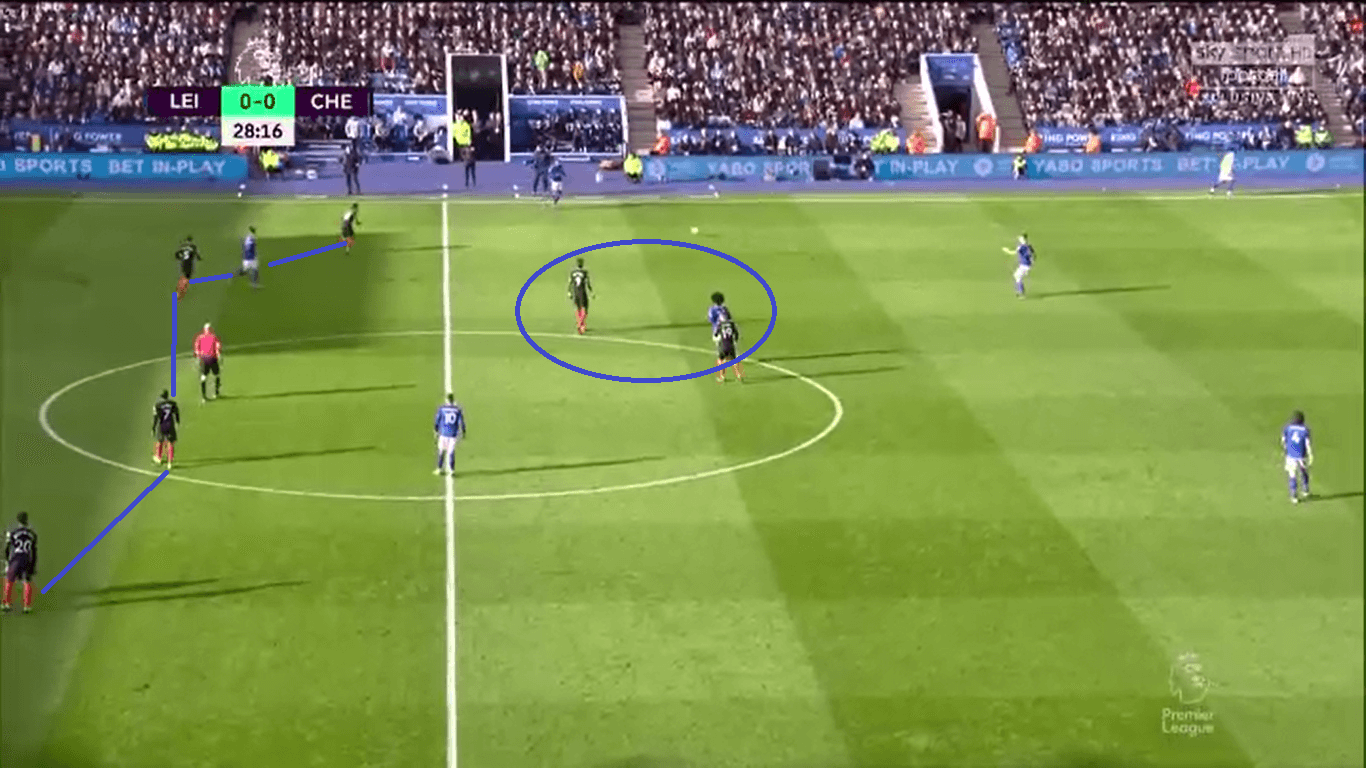
Especially against Manchester United, even though in a 4-3-3, Chelsea focused heavily on preventing passes to the defensive midfielders, like in the image below.
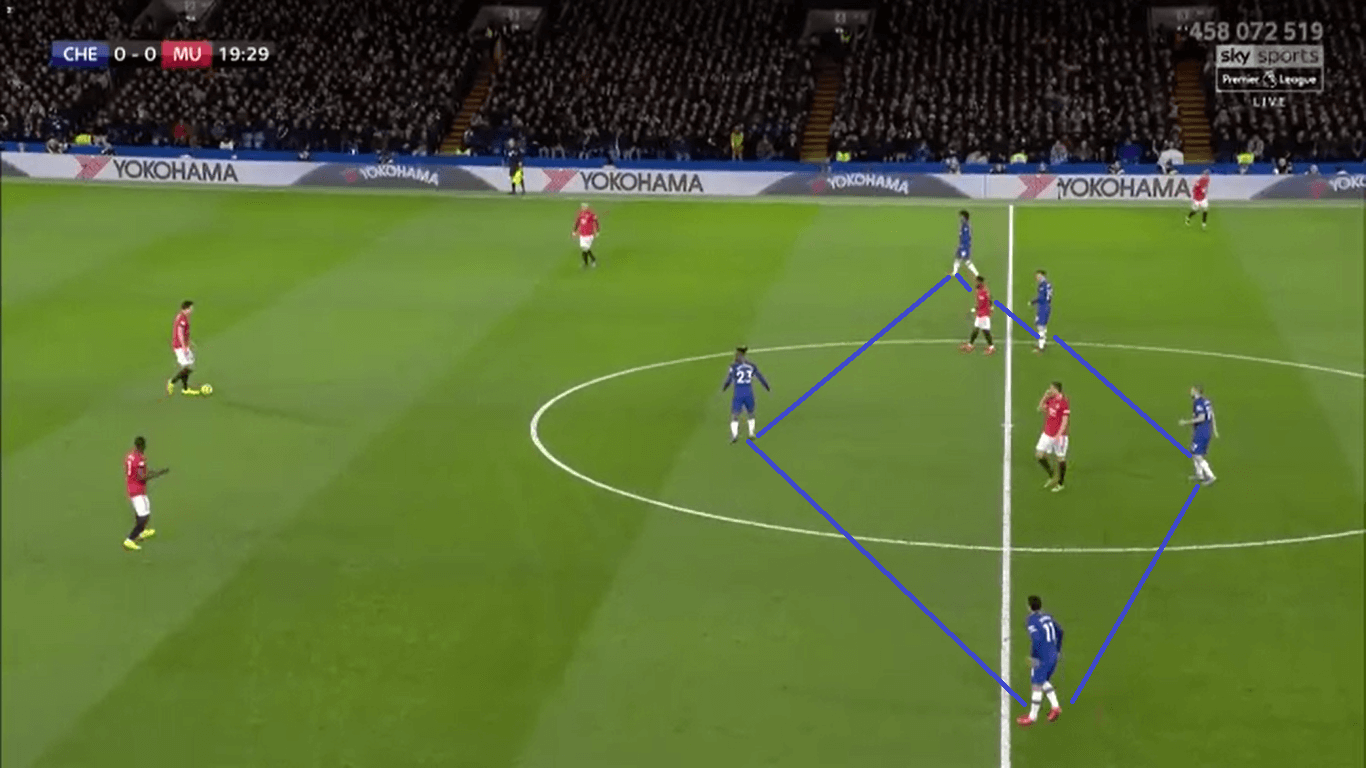
Again, the 3-4-2-1 is an advantage here, as Chelsea would have an additional central player on the pitch. Looking at the image below from the game against Tottenham, we see that the opponent has almost no forward passing nor the opportunity to play into the centre when Chelsea defend so compactly.
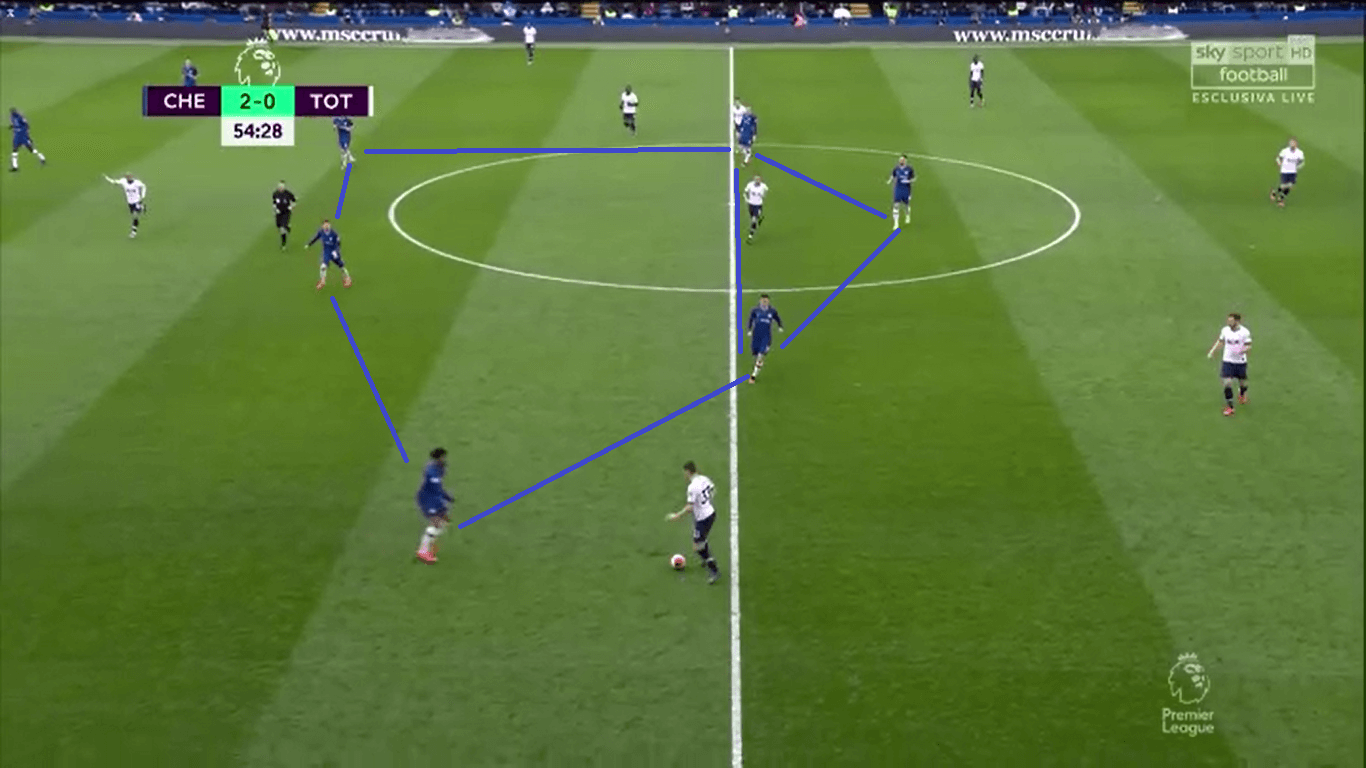
But what about counterattacking situations? As mentioned before, when Bayern win the ball, they are capable of attacking quickly. Formation-wise, the back three in a 3-4-2-1 ensure that most of the time, Chelsea have enough players in rest defence. But also when they play a 4-3-3, Jorginho is able to read the game and fall back instantly to help out.
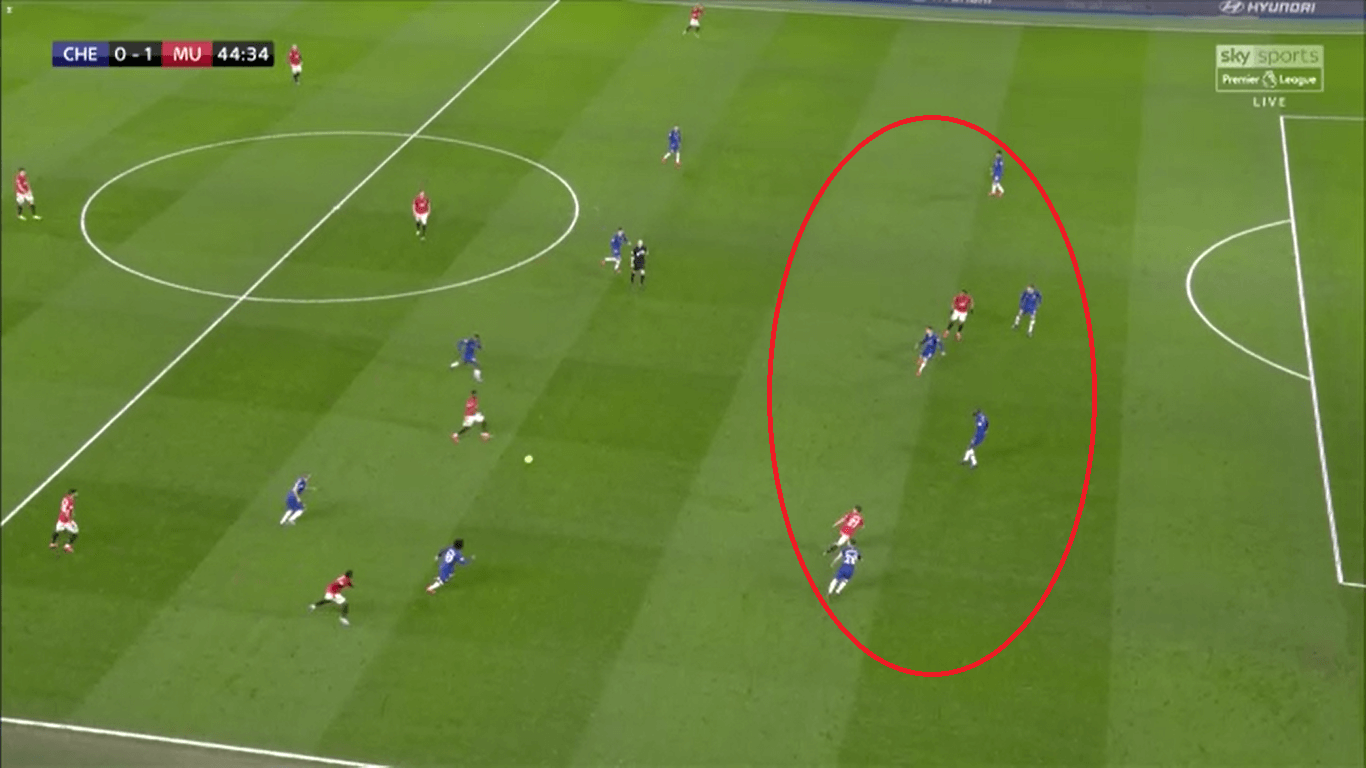
However, the team is more or less split into two pieces and huge gaps occur between these two parts. Within the defensive chain, individual position taking is also not always optimal, so this could pose a problem. The key here would be to avoid turnovers in dangerous zones.
Chelsea might take a timid approach offensively
In order to avoid such turnovers, Lampard might react cautiously and advise his team to play it safe, even though Chelsea play at home. Even though a 3-4-2-1 will ensure that Chelsea have a lot of players in the centre, they may lack the width make use of Bayern’s weaknesses.
Again, as Pavard and Davies push up so high, the spaces behind them are the one to be exploited. However, Alaba’s understanding of the game, as well as his quickness, allow Bayern to not worry about the left defensive wing. Also, Davies is just so fast that he is able to run back in time in most cases.
For Chelsea, the more interesting opportunity will be Bayern’s right defensive wing, so the space behind Pavard which is covered by Boateng. If Lampard wants to exploit that, he needs to use a 4-3-3 though, which pretty much sums up his whole dilemma. Ross Barkley and Mason Mount are great players in the centre of the pitch, but both lack the speed of Pulisic, who will not play unfortunately. Pedro, Willian or maybe even Callum Hudson-Odoi could alternatively fulfil this role. It would be interesting to see if a slightly asymmetrical 3-4-2-1 with Pedro occasionally moving out to the left-wing would work.
If Chelsea are not able to exploit these open spaces after turnovers from Bayern, we will have to watch out for Chelsea’s set-play. As Lampard knows how important good possession game can be in such games to control and dictate the pace of it, he will have a thought about this as well.
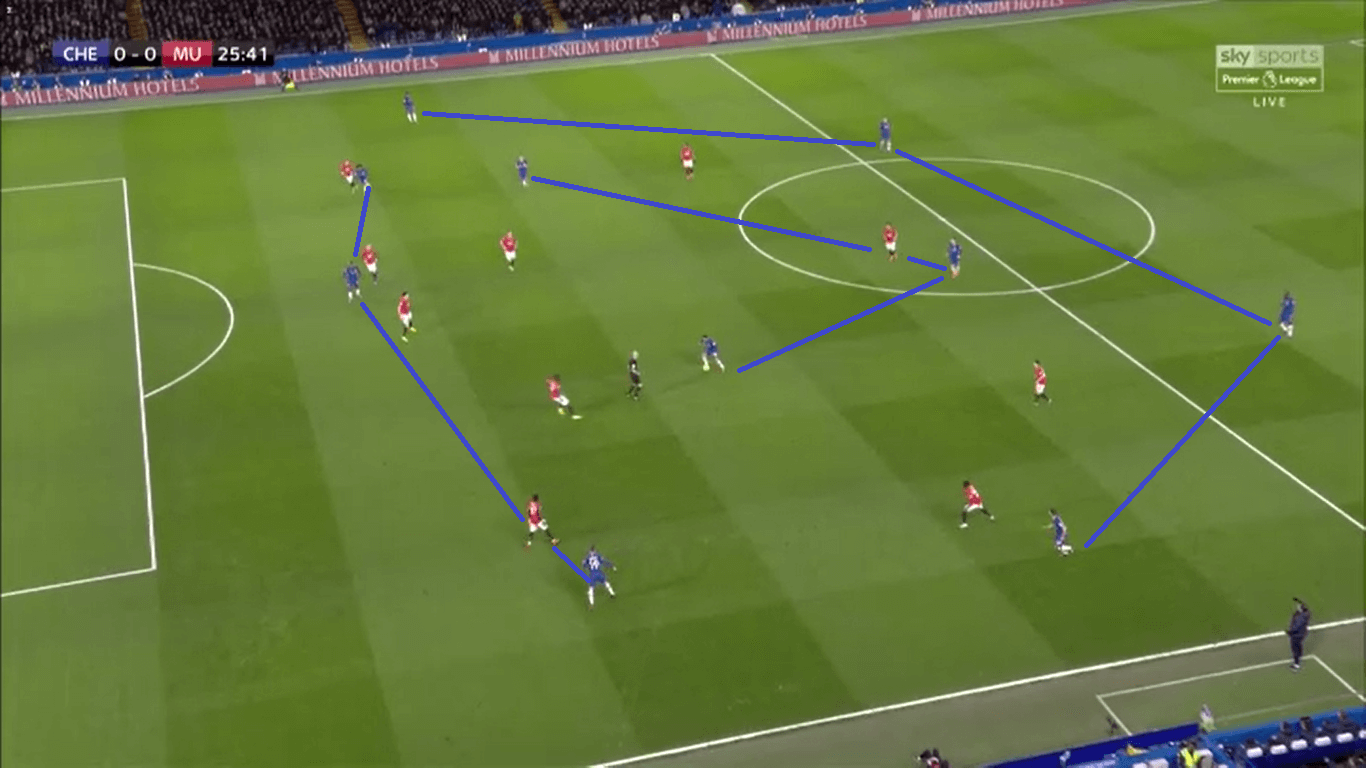
Looking at the image above, we see endless attacking potential with a 4-3-3. Left-back Alonso is a bit more cautious than he uses to be in a 3-4-2-1. If the ball is played to the left-wing though, he would have space to exploit. Also, Chelsea’s connections are great. The ball could also be played to the three forwards. Also, shifting to the other half-space is possible as well.
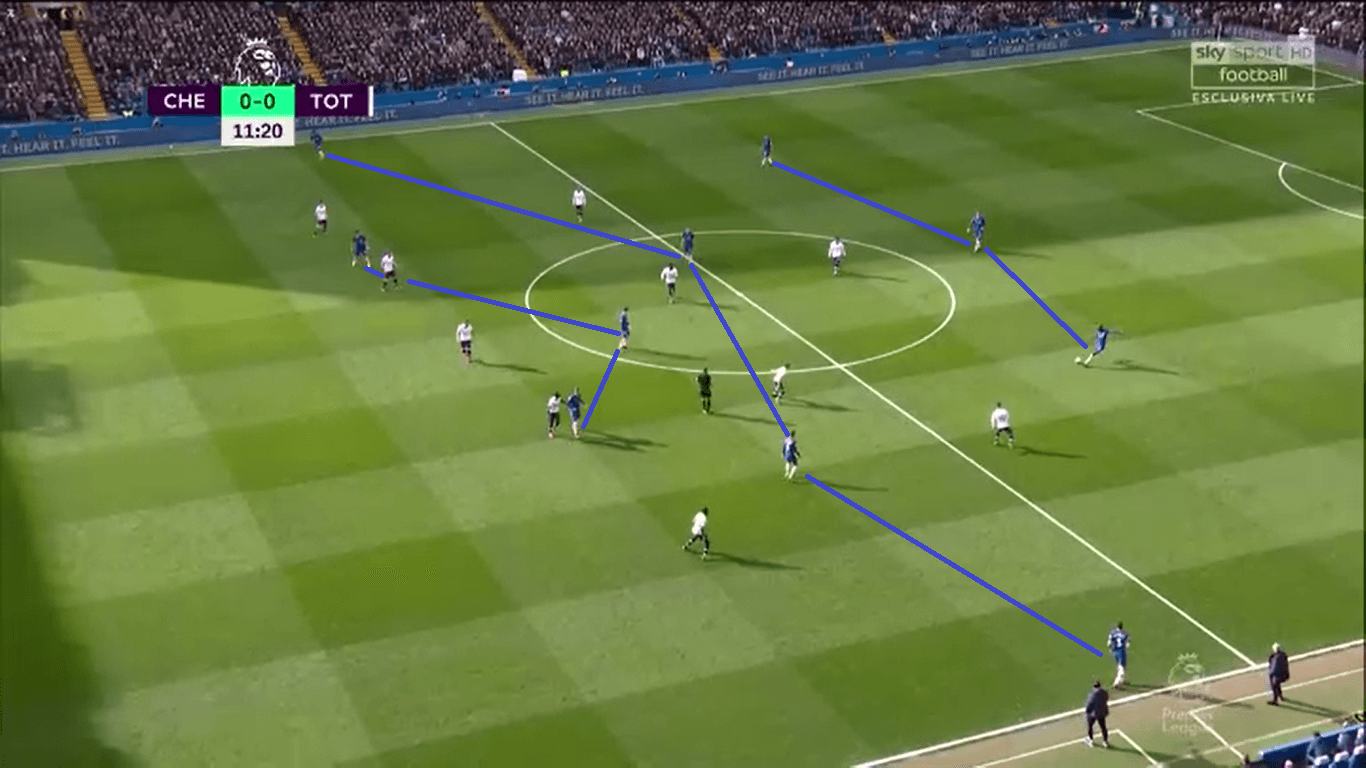
In a 3-4-2-1, spaces are a bit tighter. While it is still possible to play short passes, long balls behind the defensive line with focus on gegenpressing seem promising as well. This might also help Chelsea to avoid turnover, which was one critical point we pointed out. However, controlling the game like in a 4-3-3 would not be possible. In the end, it is up to Lampard to consider these things, but whatever he decides to do, we will get a highly interesting game.
Conclusion
Our tactical analysis pointed out that both Bayern and Chelsea have a lot of thinking to do before the game even starts. For Bayern, it is about nuances in the execution of their plan, which will not be all that different from their other games. They will focus on pushing their full-backs up the pitch, while the wingers move into the half-spaces. High press and vertical play are also trademarks of the Bavarian squad. To neutralise Bayern’s attacking potential, Chelsea’s 3-4-2-1 could fit quite well. However, offensively the 4-3-3 structure seems more promising. Controlling the game and making sure Bayern have to run a lot so that they get tired towards the end of the match may well worth considering, having the side effect that Bayern’s pressing intensity could ease up that way. There are also other details that can very well decide such a game, like Chelsea’s weakness during set-pieces. All in all, the one thing we can be absolutely sure of is that this will be a great clash between two fantastic teams.





Comments